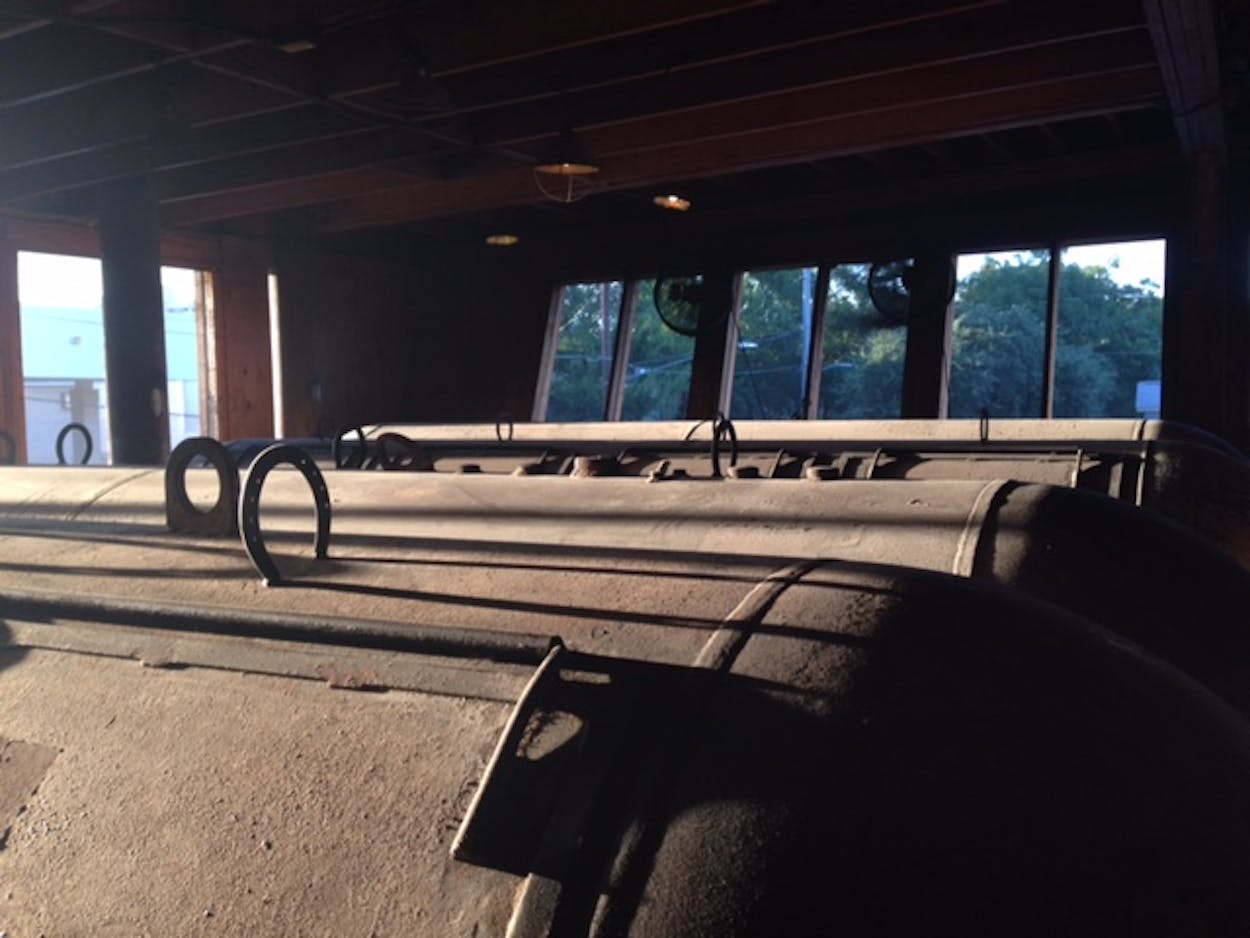There was some empty talk last year about Austin banning wood-cooked barbecue. The proposal went up in, ahem, smoke, and disappointed salesman for expensive “smoke scrubbers” were forced to turn their attention to other cities. The episode reminded us how much we cherish the traditional cooking methods of Texas barbecue and how much it contributes to our culinary identity. It was also a reminder of how the whims of city governments could take it all away.
I recently wrote about The Pit Room in Houston, a new barbecue joint with great promise. It also has the most over-built exhaust system of any pit room I’ve seen in a Texas barbecue joint. I spoke with its pitmaster, Bramwell Tripp, inside the newly finished smokehouse. They’d envisioned a screened in pit room like you’d find all over the state, but Tripp said the Houston Health Department “fought us tooth and nail.” In the end, the health department wouldn’t allow just the screens, at least not in a brick-and-mortar restaurant. Trailer-mounted smokers surrounded by screen are acceptable for food trucks, but at The Pit Room owner Michael Sambrooks was forced to build out a fully enclosed room of concrete block instead.
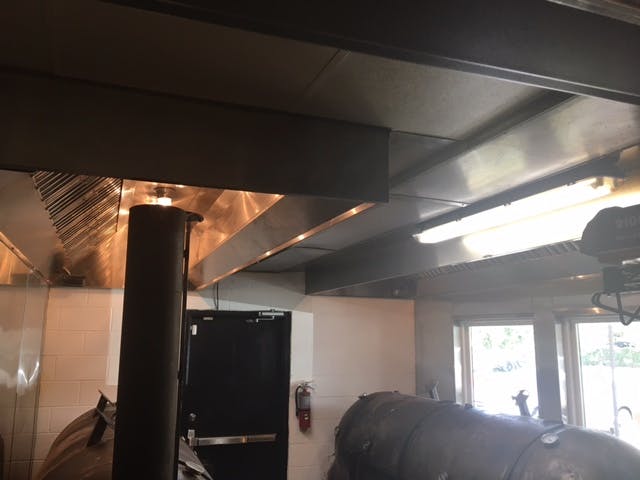
The unforeseen expenses didn’t end there. Hood systems were required on both sides of the room above the three smokers, and an expensive ansul system (to extinguish fires) came along with the hoods. These requirements were all in response to the use of custom-built, wood-fired, offset, steel smokers. Another addition was a sort of smoke scrubber at the exhaust on the roof so the neighbors in Montrose wouldn’t complain about the smoke. The exhaust system for that single room was $62,000, according to Sambrooks. It was an expensive endeavor, but Sambrooks said the high costs “never made us reconsider the cookers.”
It’s an admirable position if you can afford it, but not all independent operators have the deep pockets to meet the city’s regulations. Greg Gatlin said the high cost of the exhaust system was a big reason for his switch from wood-fired offset smokers to Ole Hickory rotisseries at his new location of Gatlin’s BBQ. “When we moved in down here, I looked at the cost of putting in something like a Klose pit [a steel, offset smoker],” he told me. When he saw the additional cost of the exhaust system, he weighed it against the cost of the new rotisseries. Even at $40,000 for a pair of new smokers, it was cheaper than the hood and ansul system required for the offset smokers he already owned. He sold one of those smokers, and kept one at his house, “for sentimental reasons.”
Gatlin did admit that the new smokers may have been a blessing in disguise to his bottom line. He said he spent more on wood than rent at the old location of Gatlin’s BBQ, and the wood bill had been cut dramatically with the rotisseries. Still, Gatlin agrees that an offset smoker shouldn’t be so hard to accommodate. “I think they should reevaluate [their requirements] because of where barbecue is going in Houston now.”
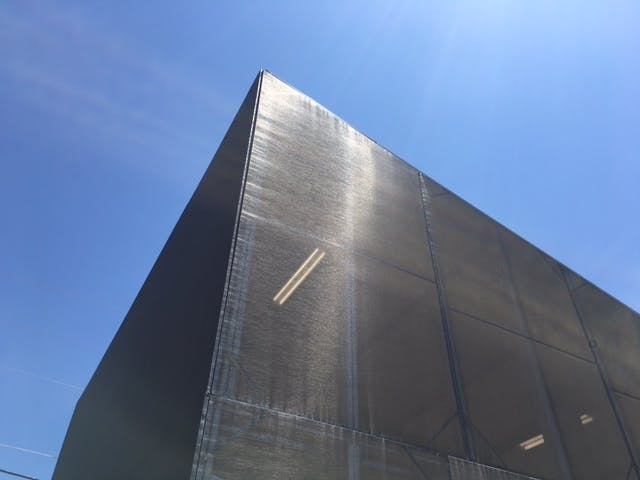
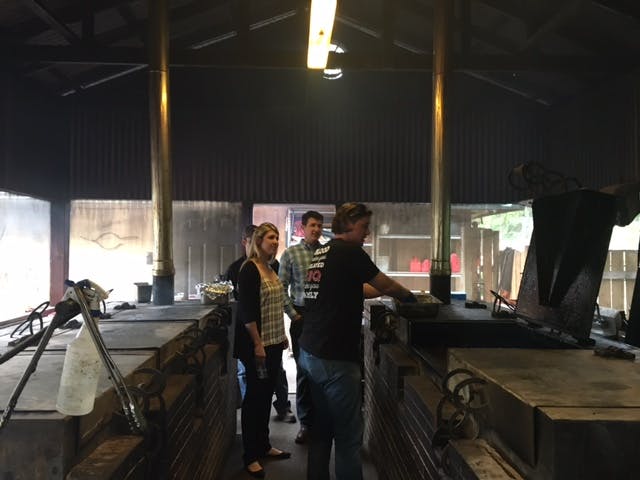
Other major Texas cities don’t face the kind of restriction that Houston does. Franklin Barbecue in Austin completed a pit room last year. It’s an elevated wood box with a fire separation between it and the existing kitchen. There are no hoods, no sprinklers, and the exterior walls are covered with screen. That’s not a unique case in Austin either. In Fort Worth, Heim Barbecue just moved into a newly renovated space on Magnolia. They built a new pit room out back that is completely enclosed with screen. (As an architect, I’m rather taken with the, dare I say, smoky aesthetic it offers). Two Bros. BBQ Market and B & D Icehouse in San Antonio are relatively new, and both have screened in pit rooms with offset smokers. Pecan Lodge in Dallas is also a sort of newcomer. They built a new pit room with, you guessed it, large screens on one wall. Their exhaust system is a little more elaborate than the others, but the duct system with an exhaust fan at the roof are far more cost effective than a hood and ansul system.
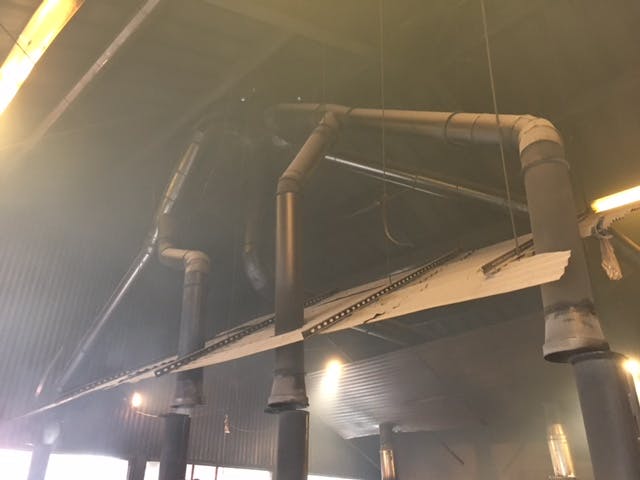
From discussions with barbecue joint owners in Houston, the costly requirements not seen in other cities are enforced by both the Houston Health Department and the City of Houston plan review division. I started to review the Health Department’s “Food Inspection Requirments [sic] for the Submission of Plans.” They’re not very detailed, but in Section 9 there is an allowance for screens on exterior walls as long as they’re “16 mesh.” A representative of the Health Department, who wanted to remain anonymous because we were discussing hypothetical situations, confirmed this.
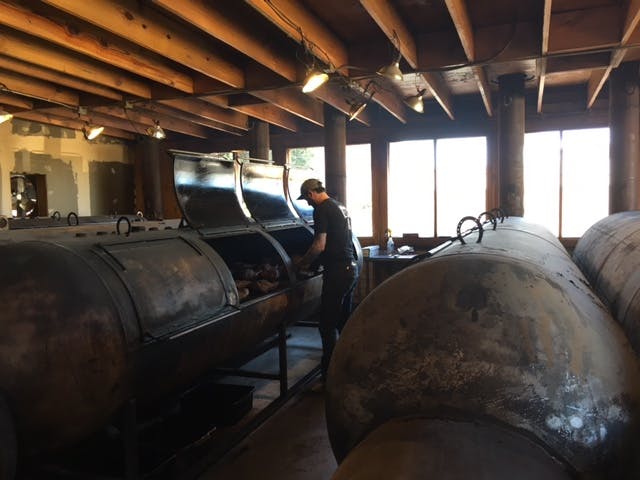
On the screen issue, the representative was emphatic. “Screens are not dust and pollution proof. That’s why we require all that to be enclosed,” he explained. I didn’t get into arguments about other jurisdictions having a different opinion. Houston is his turf, and this is what the department feels is right to keep the public safe. He did say, however, there was a way to have screened exterior walls. “You can have screens, you just have to be capable of having them closed up,” he said. They can remain open as long as someone is on the premises who can close them (that could be all day and night in the case of a barbecue joint), whether it’s with shutters or garage doors.
Section 10 of FIRSP covering ventilation is brief, stating in part:
All rooms shall have sufficient ventilation to keep them free of excessive heat, odors, smoke, and fumes. In all new or remodeled establishments; all rooms from which obnoxious odors, vapors, or fumes originate shall be mechanically vented to the outside.
I asked the employee if they mandated the ventilation to come by way of a hood system, and he said no. He stressed that these rulings are made on a case-by-case basis, but basically don’t try to put your wood smoker in the middle of the kitchen or you will most definitely need and expensive hood and ansul system. And definitely route the smoker exhausts up through the roof, as they do in the Franklin Barbecue pit room.
I called the plan review division to confirm the ventilation requirements with them. Juan Ortiz is the supervisor for HVAC reviews, which covers ventilation. Much like the health department, Ortiz was patient as we worked through different scenarios and helpful in finding a possible solution. More than once he suggested I simply use an Ole Hickory smoker instead of a steel offset smoker, but I convinced him, if only temporarily, of the the virtues of a stick-burner. Ortiz pointed me to Section 517 of the Uniform Mechanical Code (UMC) which covers solid-fuel cooking operations, like a wood-fired smoker. Specifically Section 517.4 suggests that a hood system isn’t required if the exhaust system is less than three stories tall. It then refers the reader to Section 510 which covers ducted exhaust systems, not hoods.
It’s a work-around that was successful for architect Daniel Ortiz of RdlR Architects, who is designing the upcoming Pinkerton’s Barbecue in Houston. He told me he also cited Section 517.4 in the plan review, which allowed owner Grant Pinkerton to install a less expensive ducted exhaust system in the pit room that’s under construction. That doesn’t mean Pinkerton thinks he got off easy. “The hardest part of the project is creatively figuring out how you can run an offset pit in Houston,” Pinkerton said. He purposefully had the pits built before he started construction so there would be no going back. Like most barbecue joints around the state, he wanted a screened-in pit room, but the health department required doors that could cover the screen, as discussed earlier. Pinkerton will install overhead garage doors at an estimated expense of $14,000.
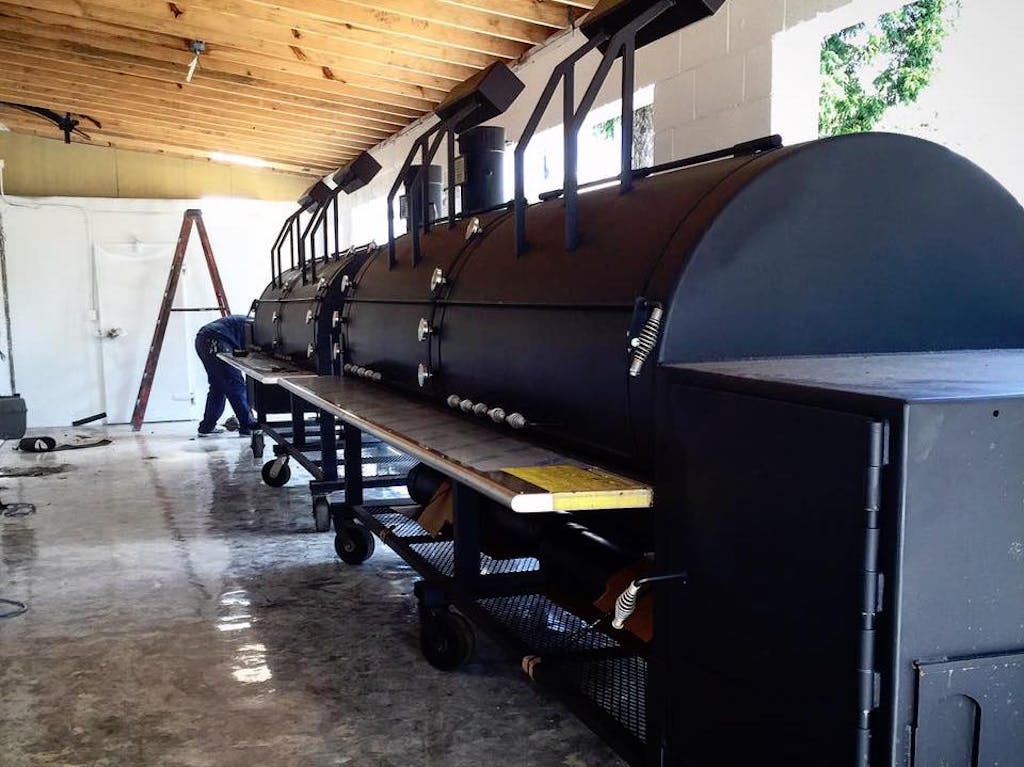
At Pizzitola’s, owner Jerry Pizzitola knows how lucky he is to be under the grandfather clause. “They [health department inspectors] don’t like the fact that we have these open brick pits,” he says of his famous smokers. Pizzitola’s pits would never be allowed to be built today, and the city inspectors know it. Managing partner Tim Taylor says they use the pit against them during routine inspections. “They always dangle this, ‘You better get this done, or we’re coming after the pit.’ That happens every time,” he said, but he vows to keep the wood fires burning.
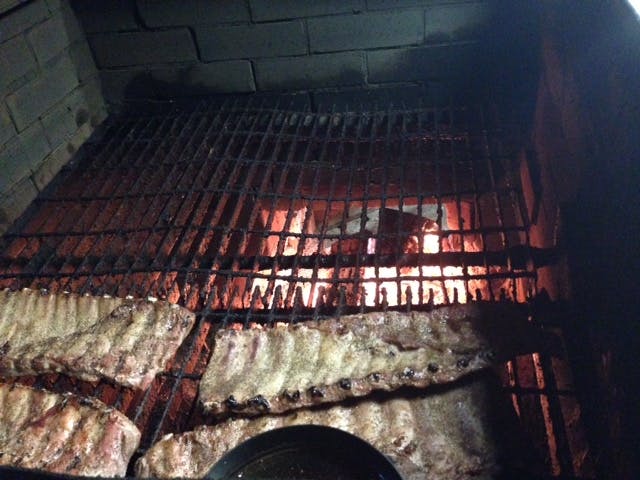
Pizzitola’s is a special case, but The Pit Room, Gatlin’s, and Pinkerton’s were simply trying to build what other barbecue joints in the state have no trouble with. From my brief discussions with city officials it seems like they’re open to interpretations of the code that are more favorable to all-wood cooking. I asked Daniel Ortiz if he got any push back about the simpler exhaust system he proposed at Pinkerton’s Barbecue, he simply said, “The Pinkertons are persistent.”
These rules and requirements might not seem like a big deal until you consider another Texas tradition that has been all but lost. Barbacoa has been cooked with wood coals in subterranean pits for centuries. It was once common to get whole head beef barbacoa from meat markets and tortilla shops across South Texas, but health department regulations have all but extinguished the practice because the subterranean pits were deemed unsanitary and unsafe. There’s only one place left in the state, Vera’s in Brownsville, where you can still buy true barbacoa de cabeza that’s cooked in the ground. If we let well-meaning city regulations snuff out wood-cooked barbecue, we could find this Texas tradition on the decline. If it comes to that, at least we know the grandfather clause is still in effect at Pizzitola’s. Taylor vows to keep the wood fired burning there with this promise. “We’re still here, and we’re going to fight it out every day.”


